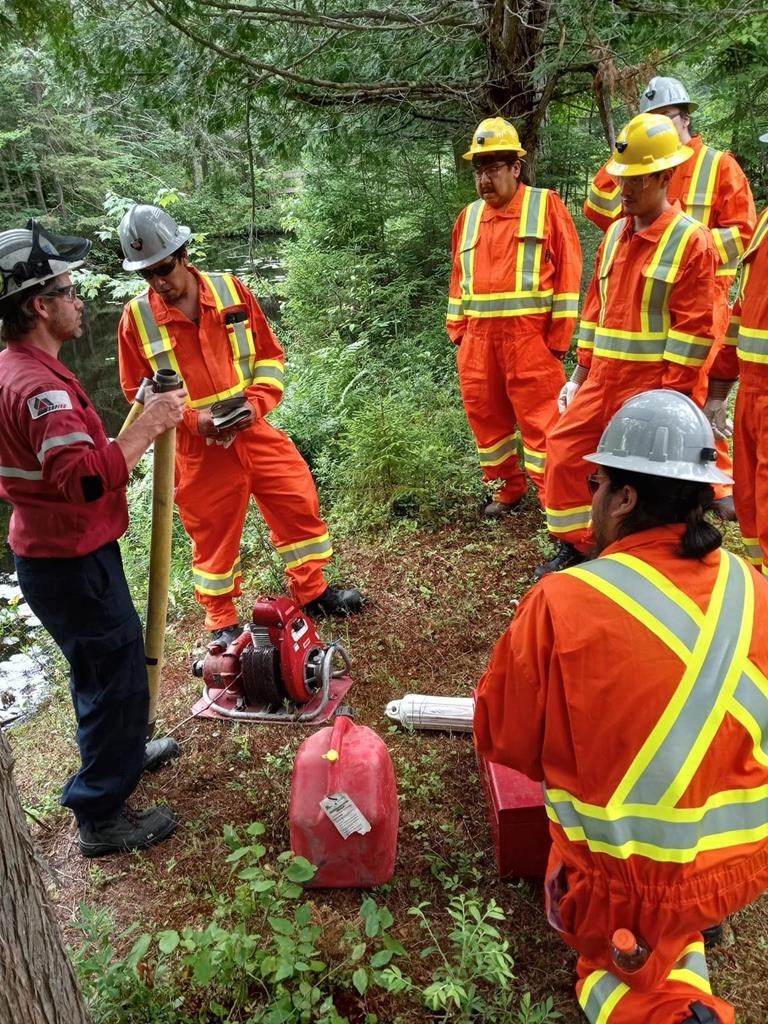MONTREAL — As the threat to northern Quebec Cree communities from historic wildfires diminishes, the Cree Nation's top firefighter is looking to a future where destructive blazes like those that have been burning for weeks become more common
Millions of hectares of forest have burned in the Cree territories, at times driving thousands of people from their homes. While the flames didn't reach any of the province's nine Cree communities, cabins, traplines and hunting grounds have been lost, said Lee-Roy Blacksmith, the regional fire marshal for the Cree Nation Government.
"There's going to be a lot of grieving because that's their land. They were born and raised in the land," Blacksmith said of the hunters and trappers. "The food that they gather won't be the same." For some, the loss of cabins will be painful, he said in a recent interview, because of "all the memories that they built throughout those years."
There will also be a financial loss for community members, Blacksmith said. For some, their cabins couldn't be insured because they're too old, while others have lost boats and ATVs. Many hunters had to leave so quickly they didn't have time to properly store geese killed during the recent hunting season, he said.
In hopes of reducing such losses in the future, Blacksmith is pushing to get more Cree trained as auxiliary forest firefighters.
This month,70 people have gone through the training — 40 from inland communities where the fires are no longer a threat and 30 from the coastal communities near where fires continue to burn. The last group finished their training last week, he said, and were scheduled to be deployed within days.
He said it took years to get Quebec's forest fire prevention agency, SOPFEU, to agree to the training for his people. "We had to push them, we had to keep asking," he said. Now he wants to expand it to ensure necessary resources are available.
Josée Poitras, a spokeswoman for SOPFEU, said she didn't know why Blacksmith's earlier requests went unanswered. She said SOPFEU trains auxiliary firefighters in areas where it expects they'll be needed. For example, she said, this year in the Atikamekw community of Manawan to the south, Indigenous auxiliary received training before the start of this fire season.
But, she said, the collaboration with the Cree is going well.
"Certainly, the local crews help us a lot to fight the fires and they have the added advantage of knowing the territory they have to protect better," she said.
SOPFEU reported Wednesday that 86 fires continue to burn in the province, with 69 in its "northern zone" — roughly the northern half of Quebec. Areas near James Bay, where four Cree communities are located, remain the most affected. While recent rains have slowed the progression of the fires, road access to several Cree communities on James Bay remains limited due to heavy smoke.
Blacksmith said this is the first year since 2013 — when a major fire burned near Eastmain on James Bay — that Cree communities have been directly threatened by forest fires.
"In the past, we used to have one fire at a time, SOPFEU would control it, would put it out in a quicker fashion. With this fire (season), we had several fires happening in a short period of time," he said. "It's a lot different than in previous years."
Since early June, eight Cree communities have undergone full or partial evacuations due to heavy smoke. All residents have since been allowed to return.
Poitras described the fires in the northern zone as "historic." This year, 128 fires in the zone have burned approximately 3.4 million hectares of forest, she said. Over the past 10 years, that part of the province has seen an average of 37 fires a year, burning an average of 208,000 hectares.
Poitras and Blacksmith attribute the size and number of fires in the northern zone to an extremely dry June. "That's when we had lightning, thunderstorms that passed by and lightning was just shooting everywhere, and it ignited the territory like nothing," Blacksmith said.
He sees it as a sign of a changing climate that's slowly leading to the "different weather, different seasons we've been having," he said.
This report by The Canadian Press was first published July 26, 2023.
Jacob Serebrin, The Canadian Press




